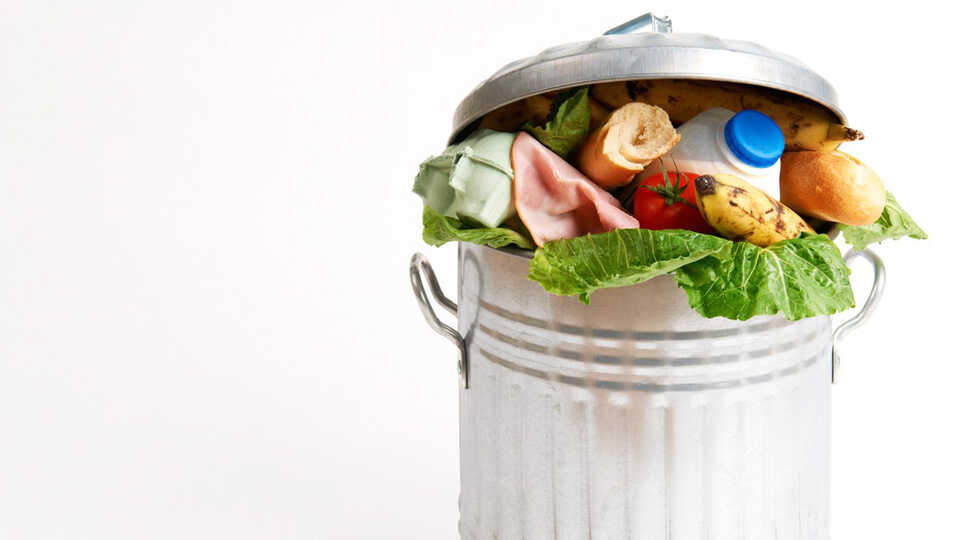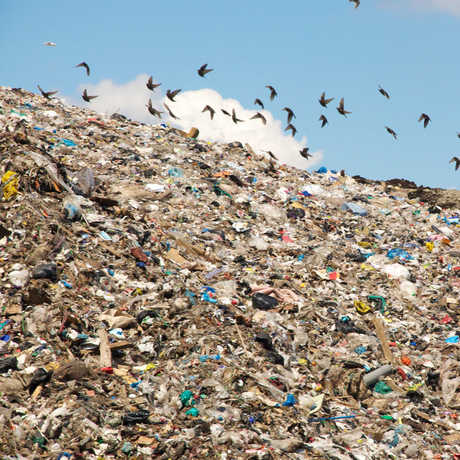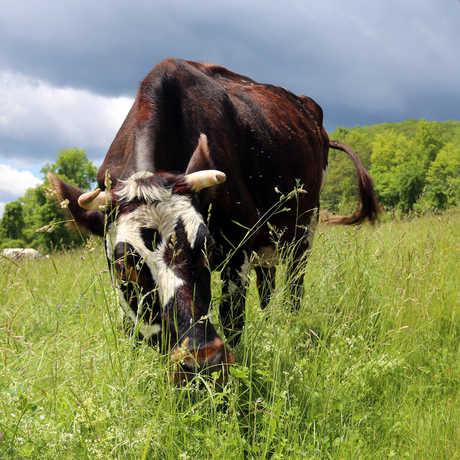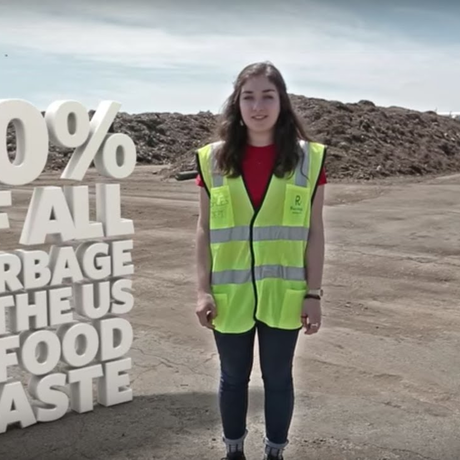
"Fresh Food In Garbage Can to Illustrate Waste" by SpeedKingz/Shutterstock.com
Have you ever thrown away food after a meal? Have you ever thrown away a whole piece of food? What are some of the reasons you threw away that food?
During this Food Waste Audit, students will explore their own impact on our food system. Students will brainstorm solutions to reduce their food waste and be challenged to try out their solution!
In this lesson, students will:
- collect data on how much food they waste each meal.
- analyze and interpret student-collected data.
- design some solutions for preventing food waste.
- Food Waste Audit worksheet
- A meal
- Decide which meal your students will collect data.
- Print one Food Waste Audit worksheet per student
- Determine how you will collate your class data.
Introduce the concept of food waste. Ask students:
- Raise your hand if you have ever thrown away food after a meal.
- What are some of the reasons you threw away food?
- Raise your hand if you have ever thrown away a whole piece of food. For example an entire apple or a loaf of bread.
- What are some of the reasons you threw away that food?
- Instruct students they will be collecting data to learn about their own food waste after a meal.
- Assign a meal time students will be looking at their food waste: lunch or dinner are highly recommended.
- Demonstrate how to use the Food Waste Audit worksheet to document the data. Each day of the week students will:
- Check off the type of food wasted after their meal. If there are other types of food not listed, have students write it in under the “Other” section.
- Write in the reason why the food was wasted. Examples of reasons include “I don’t like it,” “I didn’t have to time to eat it,” “Food was damaged or looked bruised,” or “I was full.”
- At the end of the collecting data time frame, have students write down the patterns they notice in the foods they wasted and the reasons why they threw them away.
In pairs ask students:
- Compare your data. What do you notice that is the same and different from your partner’s data?
- Do you notice any patterns when comparing the food you wasted?
- Do you notice any patterns when comparing the reasons why you threw the food away?
As a class:
- Collate your students’ data for types of foods and reasons why food was wasted. In the lesson plan are two examples of how you might collate your class data.
- You can enter data into a class data table. A class data table can be a powerful tool so that everyone can look at the same data.
- You can make an open data table at the front of the class. Students will be responsible for filling out parts of the class data table. Students then can put the data they collected in their audit into the larger data table created by you.
- Ask students:
- What are the patterns you see with the class data?
- How does it compare to the data?
- Write down all the reasons why students’ food was wasted. Brainstorm solution to each of the reasons.
- Then challenge your students to try one of those solutions for a week. Keep track of their progress throughout the week.
Ask students:
- Are there other data, measurements, or information that would be helpful in assessing food waste?
- What was challenging about doing the Food Waste Audit?
- What might you try differently next time?
Flipside Science: Reducing Food Waste
This video explores some easy ways you can help reduce food waste.
Reducing San Francisco’s Landfill Waste
Learn about how San Francisco is approaching food waste in landfills in this classroom activity.
Your Plan, Your Planet
In an effort to help people understand the impact of their waste, Google partnered with the Academy to launch an interactive web app that aims to reduce waste related to food, water and electricity. In addition to having access to helpful information about waste reduction, users can take quizzes, keep track of their waste reduction progress and more!
The global food demand is projected to increase by 60%-100% by 2050 as preferences shift towards richer diets. We can address at least part of the future demand by growing more crops, but meeting the world’s needs will require as much attention to our diets, reducing food waste, and improving food security worldwide.
Worldwide, we grow enough food to meet everyone’s needs, but food waste dramatically reduces the available food supply. That’s a problem for global food security as well as our climate, given the huge amounts of greenhouse gases that go into producing the wasted food. An estimated 25% of the world’s food calories and up to 50% of total food weight are lost or wasted before they are consumed.
But the food we directly throw away as consumers is simply one layer of the problem. The majority of the environmental impact of food waste is not from the food rotting in the refrigerator or spoiling in a field. Deep impacts stem from the agricultural resources needed to grow the food in the first place. Wasted food means that we waste all of the resources that went into agricultural production, like fertilizer, water, and energy.
Love Food?
Try these tips from San Francisco Environment to prevent food waste and save money before you shop, at the grocery store, and once you’re at home.
To Cut Food Waste, Spain’s Solidarity Fridge Supplies Endless Leftovers
This news story is about a community fridge in Spain, and includes a radio broadcast version.
Foley, Jonathan. “Feeding 9 Billion - National Geographic” Feeding 9 Billion - National Geographic, National Geographic.
Foley, Jonathan. “So, What Can I Do?” The MACROSCOPE, 19 Sept. 2016.
Image: "Fresh Food In Garbage Can to Illustrate Waste," by SpeedKingz, Royalty-free stock photo ID: 344303615, Shutterstock.com - Attribution: SpeedKings/Shutterstock.com.
Disciplinary Core Ideas (Grades 6-8):
- MS-ESS3.A: Natural Resources
-
MS-ESS3.C: Human Impacts on Earth Systems
Science and Engineering Practices
- Analyzing and Interpreting data


